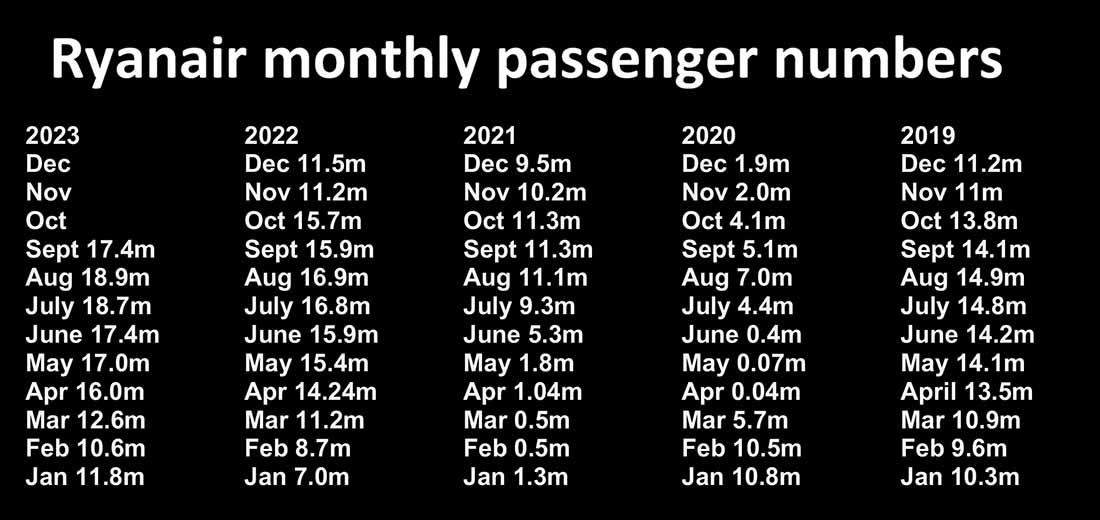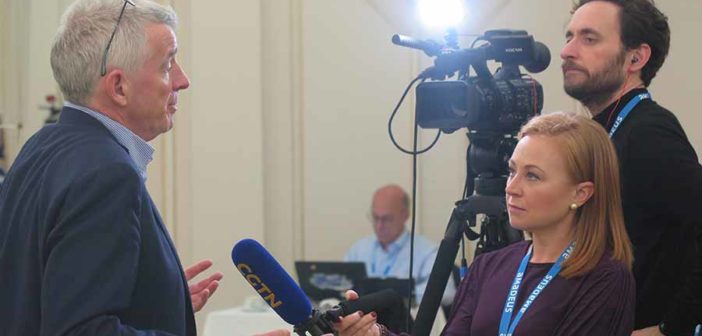
Michael O’Leary and Ryanair have evolved over the years. In the past, they were known for attention-grabbing stunts and outrageous proposals. O’Leary’s name is still synonymous with headline grabbers such as his statement that “the customer is always wrong” (as he claimed on a television programme, the “Late Late Show” on RTÉ), his suggestion of standing-only tickets and fees for using the toilet.
Now that Ryanair have become Europe’s biggest carrier, they focus more on their accomplishments rather than their stunts or the CEO dressing up in leprechaun hats. He says it is time to become “slightly more corporate” rather than “running around looking like an ’eejit.”
Since the pandemic, Ryanair has managed to emerge stronger by increasing their daily flights and surpassing their pre-COVID passenger numbers by a margin. Monthly figures for July (18.7m), August (18.9m) and September (17.4m) are all records for the month. July and August were 26pc ahead of their 2019 figures, which were records at the time, and September is 23.4pc ahead of 2019. Europe’s second largest airline, Lufthansa, is trailing its 2019 figures by 15.8pc.
Ryanair’s business model of low-cost flying (average fare €41.12, up from €27.33 in 2022 and €37.03 pre pandemic) and additional charges (average ancillary revenue €22.81, up from €17.14 pre pandemic) has allowed them to maintain a strong balance sheet. Although their aircraft delivery pipeline has slowed due to production delays, they still aim to carry a large number of passengers and are working with Boeing to expedite deliveries.

Ryanair is Europe’s biggest carrier by a stretch with 60m more passengers than the Lufthansa group, their former perennial rivals at the top of the charts. The harp is now emblazoned on one in five flights on the continent.
Their fleet of 550 all-Boeing aircraft work harder and have higher load factors than any of their rivals. Load factors in July and August were 96pc, that in September dropped to 94pc, still ten points ahead of competitors.
Summer schedules 2023 saw the number of daily flights increase from 2,000 to 3,000. This could boost passenger numbers to 183m in the financial year to March, easily surpassing the pre-covid figure of 149m. Mr O’Leary says this is “partly through luck and partly through bravery”.
Ryanair kept its aircraft certified and its pilots licensed during the pandemic to be ready for a speedy return to the skies. It also started hiring again before anyone else. It was expensive. The airline lost over €1bn from its strong balance-sheet built on a business model of ultra-low-cost flying.
Mr O’Leary renegotiated an order for 135 of Boeing’s 737 max narrowbodies and, if the rumours are true, ordered 75 more in 2020 at the height of the covid slump at just one-third of the list price.
That delivery pipeline has slowed. Ryanair had expected to receive 27 aircraft, but due to production delays at the Spirit Fuselage facility in Wichita, combined with Boeing’s repair and delivery delays in Seattle, Ryanair now expects to receive only 14 aircraft. That means that proposed 2023 routes have been trimmed. The number of aircraft based in Dublin, where the airline is involved in a spat over passenger charges, has been reduced by two.
Those at Charleroi, where the airline has faced serial strike action by its pilots, by three. Ryanair will reduce 5 aircraft across 4 Italian bases, including Bergamo, Naples and Pisa. There will also be aircraft reductions in East Midlands, Porto, and Cologne. Ryanair says it has no spare aircraft this winter as scheduled maintenance is necessary across its full fleet of over 550 aircraft in order to have them all serviceable for its largest ever summer 2024 schedule.
It still hopes to carry close to its 180m passenger target despite these setbacks. Ryanair is working with Boeing to try to accelerate deliveries in the Jan-May24 period so that it can enter the Summer 2024 peak travel season with all 57 new Boeing aircraft deliveries as expected.
Negotiations with Boeing over planes for the next phase of Ryanair’s expansion have stalled, as the aircraft-maker resists more discounts. Mr O’Leary remains confident in striking a deal and envisions carrying 300m passengers by 2035. He believes that European aviation may enter a period of stability after years of excess capacity, where barriers to entry, such as order backlogs and financial uncertainty, make it difficult for newcomers. Ryanair continues to set itself apart with industry-leading low fares and a knack for turning adversity into opportunities.
Between its stock market debut in 1997 and 2019 passenger numbers rose by an average of 19pc a year.
He says that after 30 years of excess capacity European aviation is in for a period of stability. Newcomers will find barriers to entry are already going up. One comes from the manufacturing duopoly of Boeing and Airbus, whose order books are full until 2027. Higher interest rates and financial uncertainty will make it harder for newcomers to raise capital.
The third is Ryanair itself, which deters rivals with fares based on the lowest costs in the industry—and with its knack for turning adversity to its advantage. As Mr O’Leary says, “war, pandemic, pestilence, something could go wrong, but that is also where opportunities come.”




